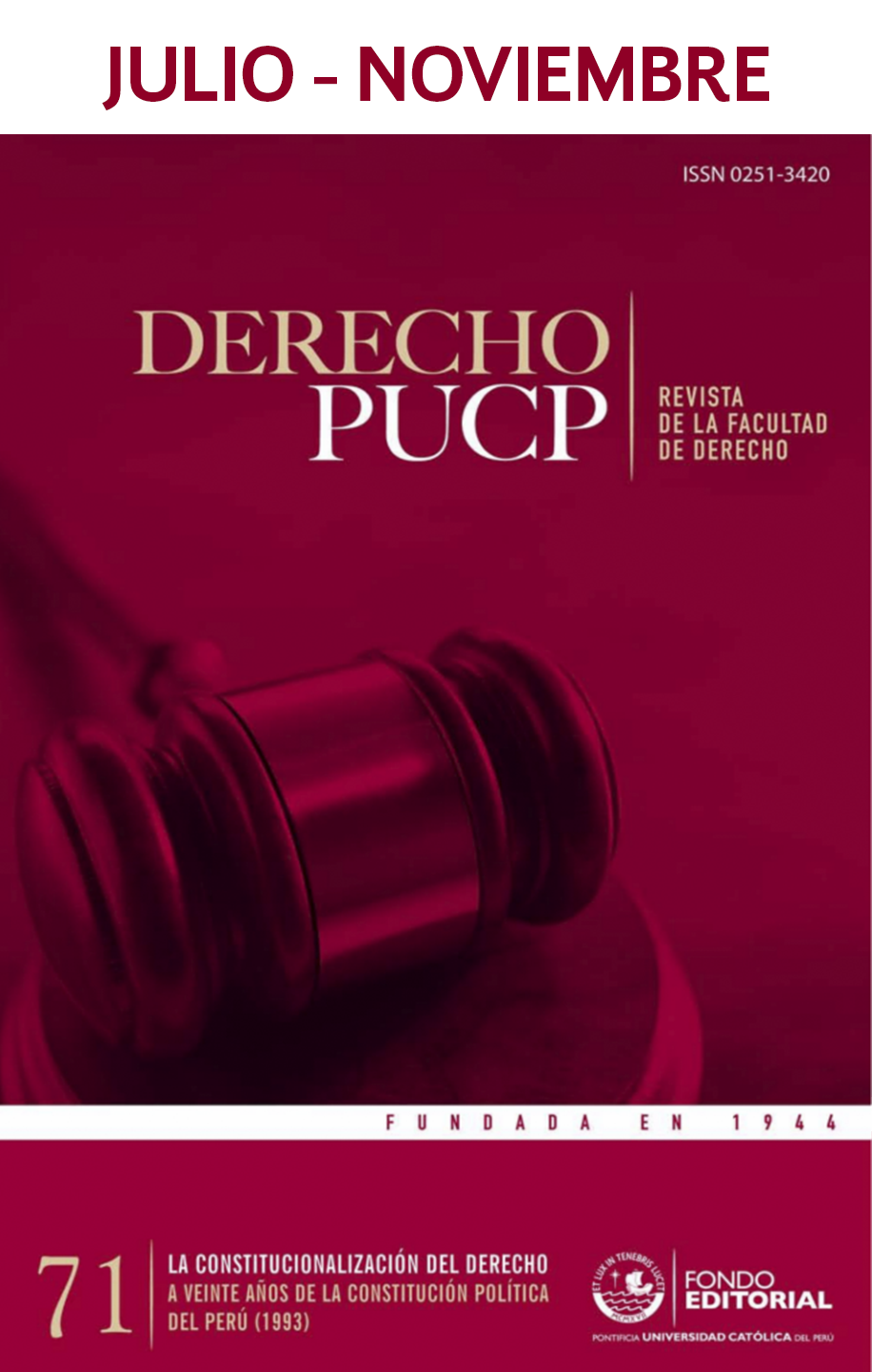La práctica del control de constitucionalidad en China
DOI:
https://doi.org/10.18800/derechopucp.201302.021Palabras clave:
control de constitucionalidad, derechos constitucionales, democraciaResumen
El autor clasifica en tres grupos los modelos de control constitucional en el mundo: el modelo de Tribunal Constitucional, el derevisión judicial y el control parlamentario, ubicando a China en este último. Posteriormente, resalta las dos finalidades principales del control de constitucionalidad: la protección de los derechos humanos y el control de constitucionalidad del sistema legal. Finalmente, el autor plantea el debate sobre el órgano que debería estará cargo del control de constitucionalidad, vale decir, si esa importante labor debe continuar en la Asamblea Popular Nacional, transformarse de un órgano legislativo a uno no legislativo o si debe quedar a cargo de la Corte Superior de China.Descargas
Citas
Dietze, Gottfried (1956). «Unconstitutional Constitutional Norms? Constitutional Development in Postwar Germany». Virginia Law Review, 42 (enero, 1956), pp. 1-22.
Donald P. Kommers y Russell A. Miller (1989). The Constitutional Jurisprudence of the Federal Republic of Germany. Durham: Duke University Press, p. 541.
Ely, John Hart (1980). Democracy an Distrust: A Theory of Judicial Review. Cambridge: Harvard University Press.
Kellogg, E. «¿La muerte del litigio constitucional en China?». China Brief, 9.
Wang, Zhengmin. Constitutional Conflict and the Role of the National People’s Congress. En: http://www.fljs.org/sites/www.fljs.org/files/publications/Zhenmin%25231%2523.pdf
William J. Nardini (1999). «Passive Activism and the Limits of Judicial Self-Restraint: Lessons for America from the Italian Constitutional Court». Seton Hall Law Review, 30 , pp. 1-63.
Zedong, Mao. On New Democratic Constitutionalism.
Zhu, Guobin (2010) . «Constitutional Review in China: An Unaccomplished Project or a Mirage?». Suffolk University Law Review, XLIII , p. 625.
Descargas
Publicado
Cómo citar
Número
Sección
Licencia
Derechos de autor 2016 Derecho PUCP

Esta obra está bajo una licencia internacional Creative Commons Atribución 4.0.




